Wisteria is the dream of every gardener, since it is one of the most amazing creeping plants. Its flowering is compared with a colorful waterfall of multi-faceted flower clouds, which make a gentle-sweet fragrance. It is grown by a tree plant in order to decorate the garden, walls of houses, arbors, arches and other buildings.
Glicinia Chinese, plant description
Wisteria or Visteria (Wisteria) is a tree plant belonging to the bean family. This is a subtropical liana with large brushes of fragrant flowers of purple, white, scarlet shades.
The word "wisteria" has a Greek origin, and translates as "sweet." The second name of Liana - Visteria - the surname of the scientist Caspar Vistara, which described in detail this plant.
Glicinia generates 9 types of Lian, which are widespread in countries with a wet subtropical climate (China, USA, Crimea, southern Russia). There are also frost-resistant wisterial varieties that are successfully grown in the regions with another climate, but they are poorly tolerated wintering and often freeze in harsh winters. It is also widely used by wisterium to grow small indoor bonsai trees.
Glicinia Chinese (Wisteria Chinensi) from China, where in the wild pops in the forests. The plant has a thick foliage of large size and complex shape: each leaf of wisteria can grow up to 30 cm long, it has a non-parpeterial structure and consists of 8-12 small leaves. Its shoots often grow up to 20 cm in height and tightly cover trees, walls and other high designs.
Flowers wisteria from May to July, covering the inflorescences of all shades of purple, less often - white. In the presence of a suitable soil and sufficient amount of the sun, the wisteria is re-blooming in September. Its fragrant flowers are collected in graceful 40-centimeter bunches that bloom at the same time. Plant blooms for 3-10 years after landing depending on varietal features.
Glicinia Chinese, common varieties
Chinese variety of wisteria has several varieties. Most of them have purple and lilac color, but there are plants with white terry inflorescences.
Most often there are such grained Chinese wisteria:
- Blue Sapphire is a charming liana with a purple-blue colors. Flowering this variety begins in May, less often bloom begins in the middle of summer. Gentle chicken-shaped sampphyrian wistercycles are growing up to 25 cm and deplete very intense, even slowly sweet fragrance. The foliage of wisteria has a gray-green shade, and with the arrival of autumn paints yellow. Liana grows up to 6 m in height, spinning on the support clockwise. Annual increase of 2 m.
- Amethyst - Rannetic War Night. Long inflorescences are painted in dark shades of purple color in the first days of May and make eyes until the end of summer. The fragrance of this variety is the most saturated compared to other types. This wisterium does not differ Chinese winter hardiness, so it requires careful shelter for the winter.
- Prolipes - a beautiful-flowing plant with bluish-purple flowers with a white base. Glicinia blooms very quickly (for 3 years) and gives an increase of up to 2 m, if you put it in a solid support, for example, walls or fences. It is well rooted and grows in moderately fertile and not very wet soil.
- Southern Belle is a delicate liana with white-violet inflorescences and aroma of moderate intensity. The peak of flowering falls on the middle of May, and by the middle of the summer begins to fall. The plant prefers solar sections and wet soil. It looks great for verandas, gazebos, pergola.
- Texas White is a dwarf grade of wisteria, which grows up to 2.5 m in height. Flowers wisteria on the second year of life, thick covered with long cream-white scenery. White wisteria prefers warm, cover cover with loose soil. Perfectly covers grilles, fences, small arbors and trees.
Glicinia Chinese, landing
If climatic conditions allow, grow high depletion of wisterium, for each gardener. When complying with the landing rules, the plant is easily adapted to urban conditions, and with careful care, it easily tolerate wintering.
Choosing a place
Wisteria is a thermo-loving unpretentious plant, which grows perfectly in sunny areas or in a half. The plant is very light, therefore, the light should fall at least 5-6 hours a day. At the same time, it is necessary to protect the wisterium from the cold and strong winds, so the optimal solution will be landing near the southern walls of the house.
Since wisteria is used for vertical landscaping, it is necessary to provide a stable or durable support for it, which can withstand multi-meter shoots and protect the plant from fault.
Choosing a place, it is worth considering that Visteria is a perennial. It is very difficult to transplant, because the root system grows as a couple of meters deep into the earth. Therefore, before boarding, think twice where you will plant it.
Preparation of soil
There are no special requirements for the soil, but it is better to plant wisteria in a moderately fertile, light and wet substrate. The soil should easily pass the air and do not delay moisture.
Wisteria is bad and often sick in lime soil. At the same time, the plant begins chlorosis, which can be found in very breathing leaves that lost their decorativeness. Also, wisteria does not like nitrogenous soil. If you move with fertilizer, the plant will cease to bloom.
To ensure wisteria, the nutritional elements are better to prepare the ground independently and fill them with the landing pit. To do this, you need to mix part of the peat, part of the humor, part of the sand and three pieces of the turf. This will be enough for rooting and active growth of wisteria.
Rules landing
Before landing, wisteria should be soaked in water for half an hour. For a small plant, it is necessary to prepare a planting pit 50x50x40 cm. On the bottom it is necessary to put the prepared substrate with a ball 8-10 cm. Break the plant is needed by 10 cm deeper than it has grown to transplant. The bark is poured over the earth on top of the earth.
Glicinia is planted at a distance of 30 cm from the support and other plants.
Chinese wisteria seedlings may not yet file signs of growth, therefore it is not worth worrying if the first two or three weeks the plant will not grow. At first, after landing, Glicinia gives all the strength to rooting and only after a little time, letters thin shoots.
Glicinia Chinese, garden care
Glicinia is difficult to call an overlooking plant. The care and reproduction of Liana does not require high time costs and provides for only the fulfillment of simple rules of agrotechnology.
Watering and feeding wisteria
Plant needs moderate watering mode. It is necessary to ensure that the soil is in moderation moist, did not drive. During the bootonization period, it is necessary to further moisten the soil if the season turned out to be without rains. This will prevent the appearance of buds. In the hot season, the plant is better spraying, because the enhanced watering can lead to stagnation of water near the roots. Since September, watering is reduced to prepare Wisteria to wintering.
To ensure abundant and regular flowering, you need to make fertilizers. The optimal option is the alternation of liquid mineral and organic fertilizers (infusion of a cowboy in a ratio with water 1:20). Began to make fertilizers during the active phase of vegetation.
For the flow of the necessary reactions in the soil, it is necessary to water the glycine with carme water twice for the season (100 g per bucket).
The underlying condition for the annual blossom of Chinese wisteria is the cultivation of lianas, taking into account all the requirements of the plant agrotechnics. It blooms to achieve a three-year-old age in May-April, and long blooms, capturing June.
Crossing Glicia
Faded inflorescences need to be removed, but dried twigs to cut. Young shoots can be taped, giving them the desired direction for growth.
Crimping of wisteria is carried out for the formation of the crown, as well as to stimulate abundant flowering. It is to remove young sprouts that interfere with flowering clusters. Flowers appear only on last year's or even older shoots, so spring trimming will not reduce the puff of flowering. It is necessary to carry out the pruning, otherwise you can not wait for flowering the next year.
Forming trimming is carried out in summer: young shoots are trimmed by 30-40 cm, the young increase is shortened by 4-6 kidneys (no more than 20 cm) at the end of August.
If you grow a nonoraous-resistant grade of wisteria in the region with cold winters, new shoots of Liana should be regularly tied. This is done in order to prevent twisting of the branches around the support, which is greatly complicating the preparation of the plant to winter.
Chinese wisteria is distinguished by moderate frost resistance, and easily transfers the drop in air temperature to -20 ° C.
You can grow wisteria both in the open soil and in pots and tubs. It does not differ, but the plant grown in vases, it is necessary to transfer to the winter with a level of air humidity not lower than 70%.
Watering should be carried out as the top of the soil burned. In the spring, young side shoots are cropped in order to form a beautiful crown. With the arrival of summer heat, Wisteria is again endowed on the street.
Zimovka Glicia
The shelter of Visteria for the winter is also carried out, as for the plenty roses. Before the onset of the cold, the roar plot is plunged, Liana is separated from the support, placed on the rolling shield, they are covered with dry foliage ball, and then covered with spunbond. If winter is miserable, the wisteria is additionally covered with a snack or agrofiber.
Such measures are aimed at protecting the root system and old shoots. The frozen of new sprouts does not carry the threat to the plant, since in the spring all one is carried out by their pruning.
The reproduction of Chinese wisteria
We define wisteria in many ways, but most often use the seed and vegetative method.
Seed fashion
Glicinia is multiplied by Chinese seeds extremely reluctant, so this method is used only by experienced gardeners.
To germinate seeds of Chinese wisteria as a soil, a mixture of sand, sheet, as well as a delicate land is used. Capacities with sinky seeds are covered with transparent material, creating a greenhouse effect. At the same time, a regular spraying of the soil is carried out using a spray gun. Hold the extended seeds in a dark place at a temperature of 25 ° C for a month. After this time, the first sprouts appear and the plant is taken out.
When the first two leafs appear, the seedlings of wisteria are peeling into separate containers without separating an earthen coma. It is necessarily disinfection with a solution of manganese. For quenching, seedlings gradually adapt to street conditions: they take a cool place for a few minutes daily.
Unfortunately, in such a way it is difficult to get a full germination of seeds of Chinese wisteria, gardener reviews only speak 25% of the gentlemen. At the same time, many noted that with this method of reproduction of wisteria reluctantly blooms, and it may never be at all the scent of inflorescences at all.
It is better to buy Chinese wisterium with a well developed and closed root system. So you will be sure that all varieties will be preserved, and the plant does not. You should not buy small shoots, they grow slowly, bloom very late and not so magnificent.
Vegetative way
If you are already growing wisteria in the garden, you can easily propagate it with the decodes.
In the spring, after the normalization of the temperature regime, an oblique incision is made in the middle of a strong annual escape. Further, the Escape bends, and the place of the knur is placed in a container with sliced-clay soil. In this position, the escape must be fixed, leaving the top in a free position. For rooting, a weak solution of indolyluxusic acid can be used. By the middle of August, the root system will appear on the site, but the sprout is separated only the next year.
Pests and diseases of Wisteria
Glicia is rarely ill. Sometimes young kidneys are ill with pyricaliarium, and if the soil becomes too alkaline, chlorosis appears on the foliage.
The plant may be attacked by different pests. More often, the plant is damaged by tsicades and tool, less often - caterpillars and ticks. Akaricidal agents helps to get rid of ticks, and with the rest of the pests are struggling with the help of insecticides.
Chinese wisteria in landscape design
Visteria is very popular in decorative plantations. This liana is capable in one season to crush any frame base or form in the form of a strawab. This "garden climber" is often used to decorate arbors, outdoor terraces and balconies.
Thanks to vertical growth, wisteria takes at least a garden area, while creating a stunning decorative effect.
Glicinia Chinese is growing perfectly along different buildings, so it is used to mask not quite visible structures or as a living hedge to protect against the Sun.

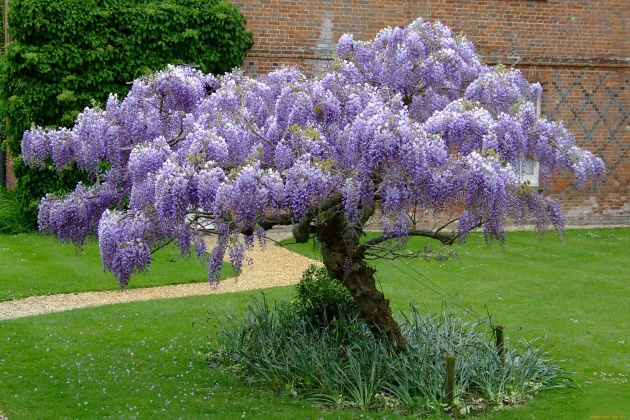
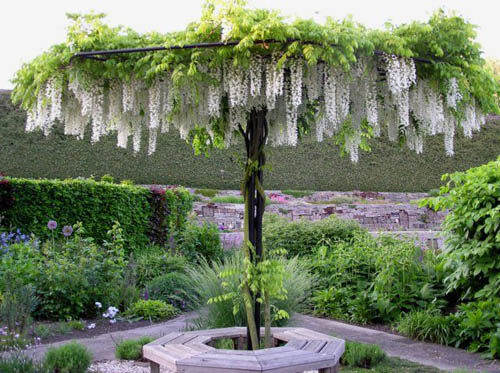
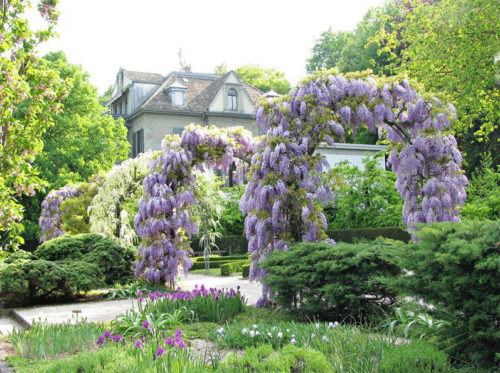
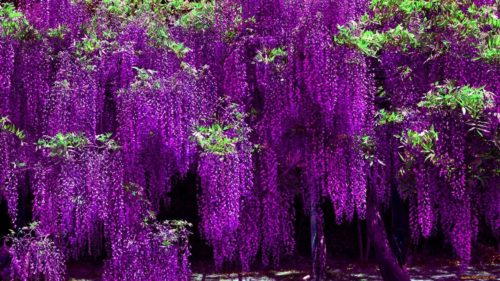
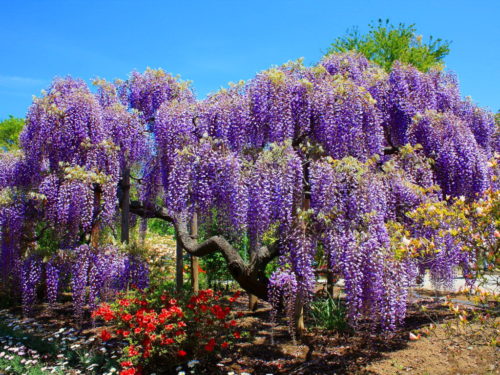
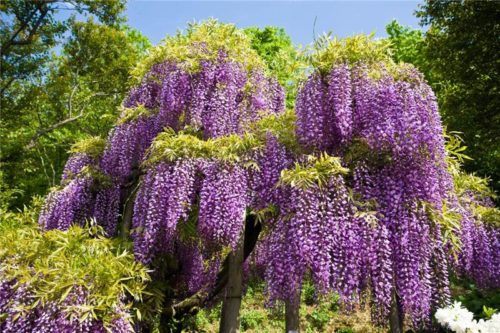
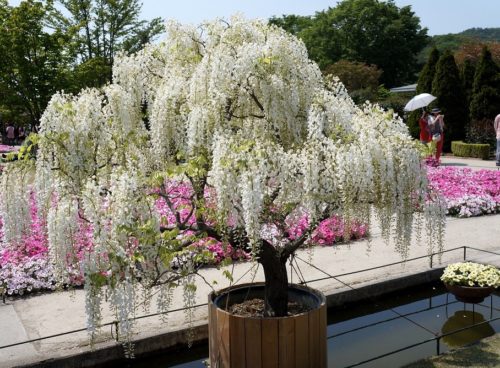
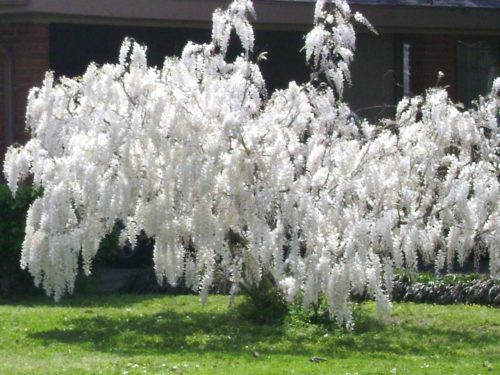
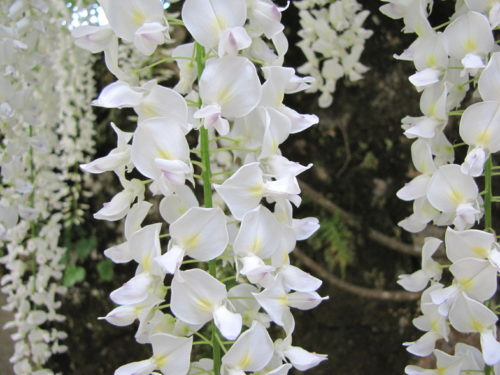
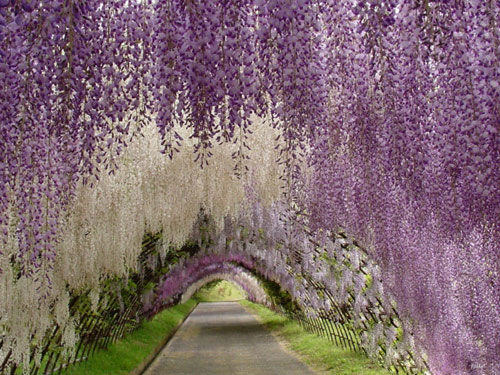
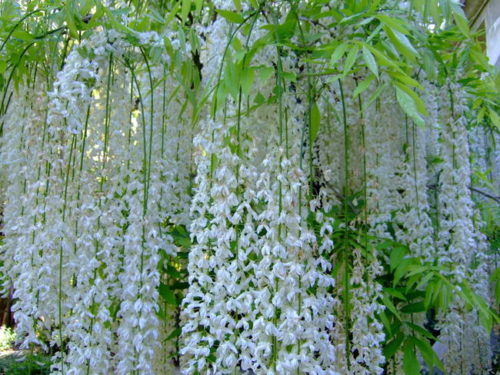
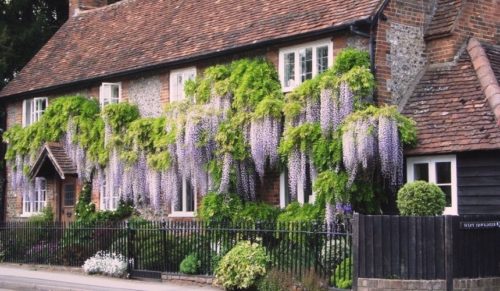
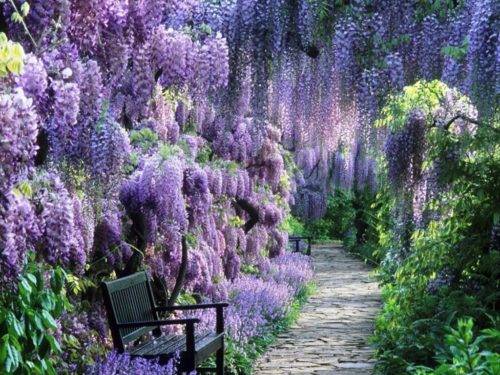
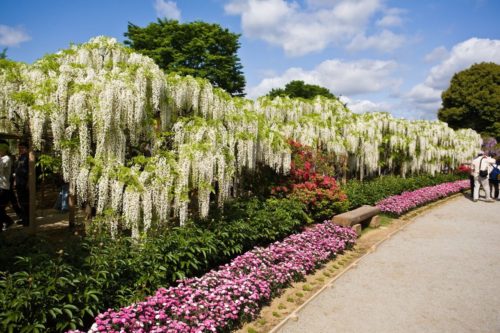
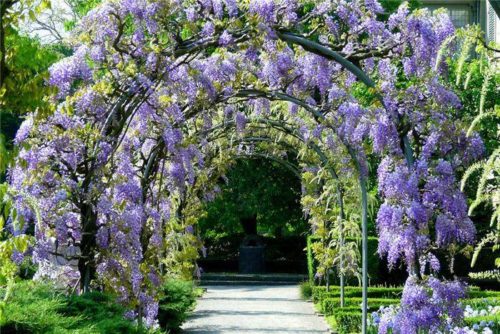
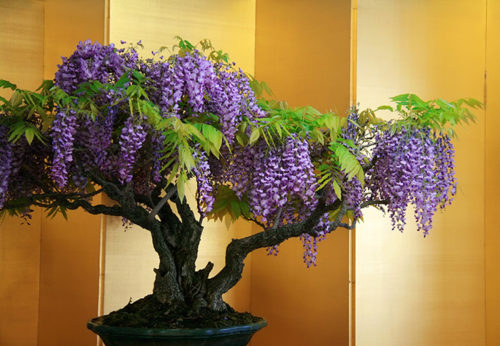

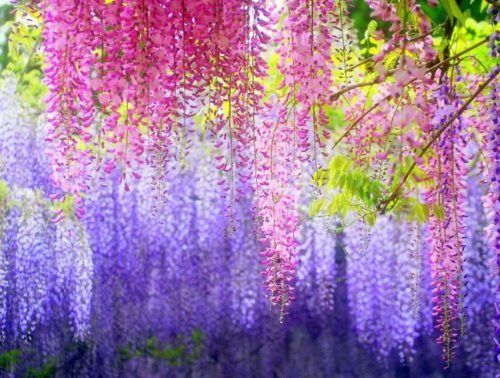












 Start a discussion ...
Start a discussion ...